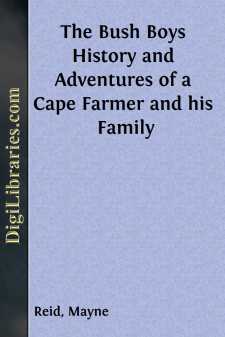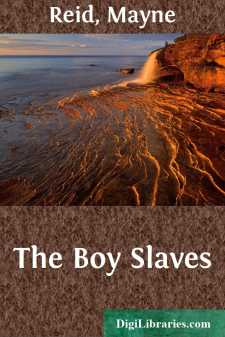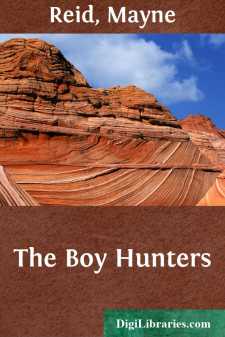Categories
- Antiques & Collectibles 13
- Architecture 36
- Art 48
- Bibles 22
- Biography & Autobiography 813
- Body, Mind & Spirit 142
- Business & Economics 28
- Children's Books 17
- Children's Fiction 14
- Computers 4
- Cooking 94
- Crafts & Hobbies 4
- Drama 346
- Education 46
- Family & Relationships 57
- Fiction 11829
- Games 19
- Gardening 17
- Health & Fitness 34
- History 1377
- House & Home 1
- Humor 147
- Juvenile Fiction 1873
- Juvenile Nonfiction 202
- Language Arts & Disciplines 88
- Law 16
- Literary Collections 686
- Literary Criticism 179
- Mathematics 13
- Medical 41
- Music 40
- Nature 179
- Non-Classifiable 1768
- Performing Arts 7
- Periodicals 1453
- Philosophy 64
- Photography 2
- Poetry 896
- Political Science 203
- Psychology 42
- Reference 154
- Religion 513
- Science 126
- Self-Help 84
- Social Science 81
- Sports & Recreation 34
- Study Aids 3
- Technology & Engineering 59
- Transportation 23
- Travel 463
- True Crime 29
Sort by:
by:
Mayne Reid
The Boors. Hendrik Von Bloom was a boor. My young English reader, do not suppose that I mean any disrespect to Mynheer Von Bloom, by calling him a “boor.” In our good Cape colony a “boor” is a farmer. It is no reproach to be called a farmer. Von Bloom was one—a Dutch farmer of the Cape—a boor. The boors of the Cape colony have figured very considerably in modern history. Although naturally...
more...
by:
Mayne Reid
AUTHOR'S NOTE. Captain Mayne Reid is pleased to have had the help of an American Author in preparing for publication this story of "The Boy Slaves," and takes the present opportunity of acknowledging that help, which has kindly extended beyond matters of merely external form, to points of narrative and composition, which are here embodied with the result of his own labor. The Rancho,...
more...
by:
Mayne Reid
The Home of the Hunter-Naturalist. Go with me to the great river Mississippi. It is the longest river in the world. A line that would measure it would just reach to the centre of the earth,—in other words, it is four thousand miles in length. Go with me to this majestic river. I do not wish you to travel to its source; only as far up as Point Coupée, about three hundred miles from its mouth. There...
more...
by:
Mayne Reid
Chapter One. I was just sixteen when I ran away to sea. I did not do so because I had been treated unkindly at home. On the contrary, I left behind me a fond and indulgent father, a kind and gentle mother, sisters and brothers who loved me, and who lamented for me long after I was gone. But no one had more cause to regret this act of filial disobedience than I myself. I soon repented of what I had...
more...
by:
Mayne Reid
BIOGRAPHICAL SKETCH Captain Mayne Reid was born at Ballyroney, County Down, on the 4th April, 1818, and was the son of the Rev. Thomas Mayne Reid. Mayne Reid was educated with a view to the Church, but finding his inclinations opposed to this calling, he emigrated to America and arrived in New Orleans on January, 1840. After a varied career as plantation over-seer, school-master, and actor, with a...
more...
by:
Mayne Reid
The Gran Chaco. Spread before you a map of South America. Fix your eye on the point of confluence between two of its great rivers—the Salado, which runs south-easterly from the Andes mountains, and the Parana coming from the north; carry your glance up the former to the town of Salta, in the ancient province of Tucuman; do likewise with the latter to the point where it espouses the Paraguay; then up...
more...
by:
Mayne Reid
Chapter One. The Palace Grodonoff. On the banks of the Neva, near the great city of Saint Petersburg, stands a splendid palace, known as the Palace Grodonoff. It is the property of a Russian nobleman of that name, as it is also his place of residence. Were you to drive up to the front gate of this grand palace, you would see a coat-of-arms sculptured in granite over the entrance. In this piece of...
more...








